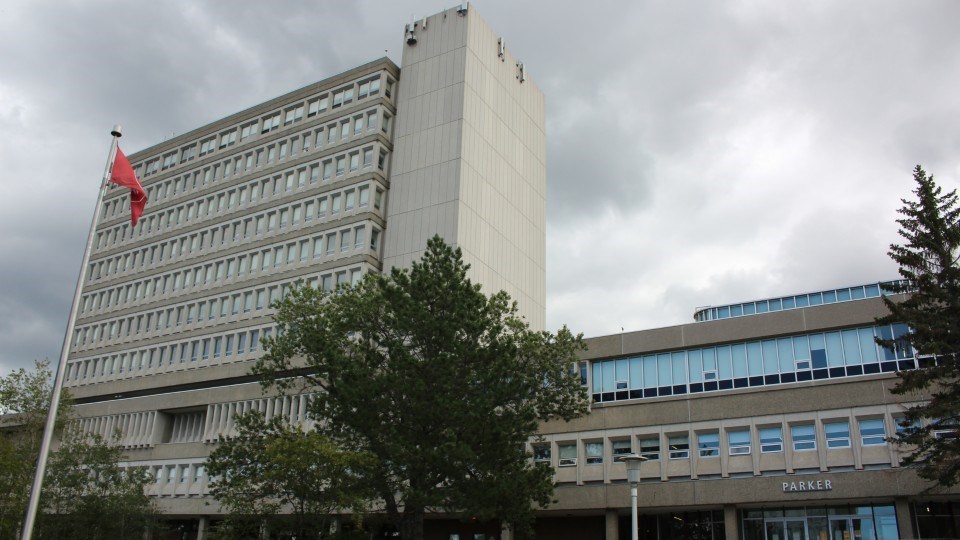Preamble: Articles that I have written about Laurentian University have received wide acknowledgement with overwhelmingly positive comments. Two issues garnered the most attention: (1) a concern for accountability regarding those who created the current financial mess, and; (2) fear about the hospital following the same path because of overlapping leadership.
As the university goes through what in my opinion is an inappropriate process at streamlining, individuals outside the institution probably do not know about an important development inside it: the growth of administration.
I only provide background on one sector which might help to understand the present financial difficulties.
Before 2000, the research administration at the university had one person and an assistant who served directly under the Vice President Academic. They handled the following tasks: reviewing large grant applications, helping faculty to find external funding, managing the internal grant competition, co-ordinating workshops by the national granting councils, advising faculty on improving their research profile, solving issues when team research projects dissolved, and resolving misuse or over spent grant issues.
The office organized some book launches and conferences to showcase faculty achievements. No special vice president or associate vice president for research existed.
At present, a Vice President Research and the Research Services offices have 12 people with secretarial staff plus three persons assigned as liaisons to the national granting councils. These people claim to do the following, in sum, similar to what was done 20 years ago with one-sixth the personnel (from LU website): “reviewing and providing feedback on grant applications, assisting faculty in finding appropriate external funding opportunities, managing and offering support for internal funding opportunities, delivering workshops about grant opportunities and grant writing best practices, meeting one-on-one with faculty to develop grant proposals as well as long-range plans for research funding, assisting with mid- and end-of-grant progress reports, working as a liaison between researchers and funding agencies to resolve issues or answer questions…” Others, especially faculty, will have to decide if more administrators has meant better support.
The situation is similar for the research institutes or centres. Six such centres existed 20 years ago — now the university has 14. Research centres at universities are important and organize special team efforts in strategic areas and some even bring funds into the university. However, again the expansion has been excessive, especially since the heads of the centres usually do not or only partially contribute to teaching.
As the university website notes, many of the new centres were created in the years after 2007, though previous presidents had already begun to add to the administration with posts and centres that were expanded under Dominic Giroux.
I have used the research sector as an example of administrative expansion because it is the area I know best. Other administrative sectors (Advancement, Deans, Associates and Assistants, Security…) likely underwent similar expansion though student enrolment only went from around 6,000 to more than 8,000.
The purpose here is not to pinpoint the individuals presently serving in those offices, but to suggest the organization cannot bear such increases in administrative personnel.
Given that I have offered strong opinions, some people have asked what I would have done, or would do, with regard to the university. So, I offer a few suggestions.
First, I would negotiate with the faculty association to reduce the expensive over age 65 personnel, by demanding a review every two years of their academic contribution and insist on enforced retirement for non-performance. If judges have to retire at 75, why not faculty at 70?
Second, I would review sectors in the administration, such as the research offices and the research centres detailed above, for their costs and contributions, shutting down those which no longer fulfil strategic needs or cost too much.
The financial problems of the university may predate current president and vice-chancellor Dr. Robert Haché, but the public has a right to ask what has he contributed in a year and a half to resolving them? The University of Ottawa turned around a similar situation by involving the faculty, not shutting them out. Haché’s blog from July 2019 promised “transparency in all we do” (blogs available on LU website). Yet he has not revealed the exchanges the university had with the provincial government before declaring insolvency.
On March 17, Haché threatened that if his version of restructuring was not accepted, the university would cease to function as of April 30. He claimed there is “nobody out there with a big cheque for us.” Yet, during the next week the provincial government handed out $106 million to small universities and colleges with none going to Laurentian. The use of a sledgehammer in a delicate situation suggests little foresight about building trust with many of those that any successor administration will have to work with.
Positive action is possible. In 1977-1978, Sudbury entered a period of serious economic crisis. At that time leaders from all economic sectors, including the university, cooperated to obtain grants, to develop employment projects, and to address the fundamental issues.
We need a similar coalescing to avoid Laurentian’s crisis becoming the new Sudbury crisis, so that Laurentian can continue to educate students and to serve the community with northern focused research. So far very few political and social leaders have come forward and no former board of governor members have offered ideas or solutions.
Dieter K. Buse is Professor Emeritus, History, Laurentian University and a former academic administrator. He has published many studies on modern European history and more recently on our region, including Come on Over: Northeastern Ontario (co-authored with Graeme S. Mount) and the two volume work, Untold: Northeastern Ontario’s Military Past vol. 1: 1662-World War I and vol. 2: World War II-Peacekeeping (available from Latitude 46, Sudbury) which won the Ontario Historical Society prize for the best regional study published in the last three years.
